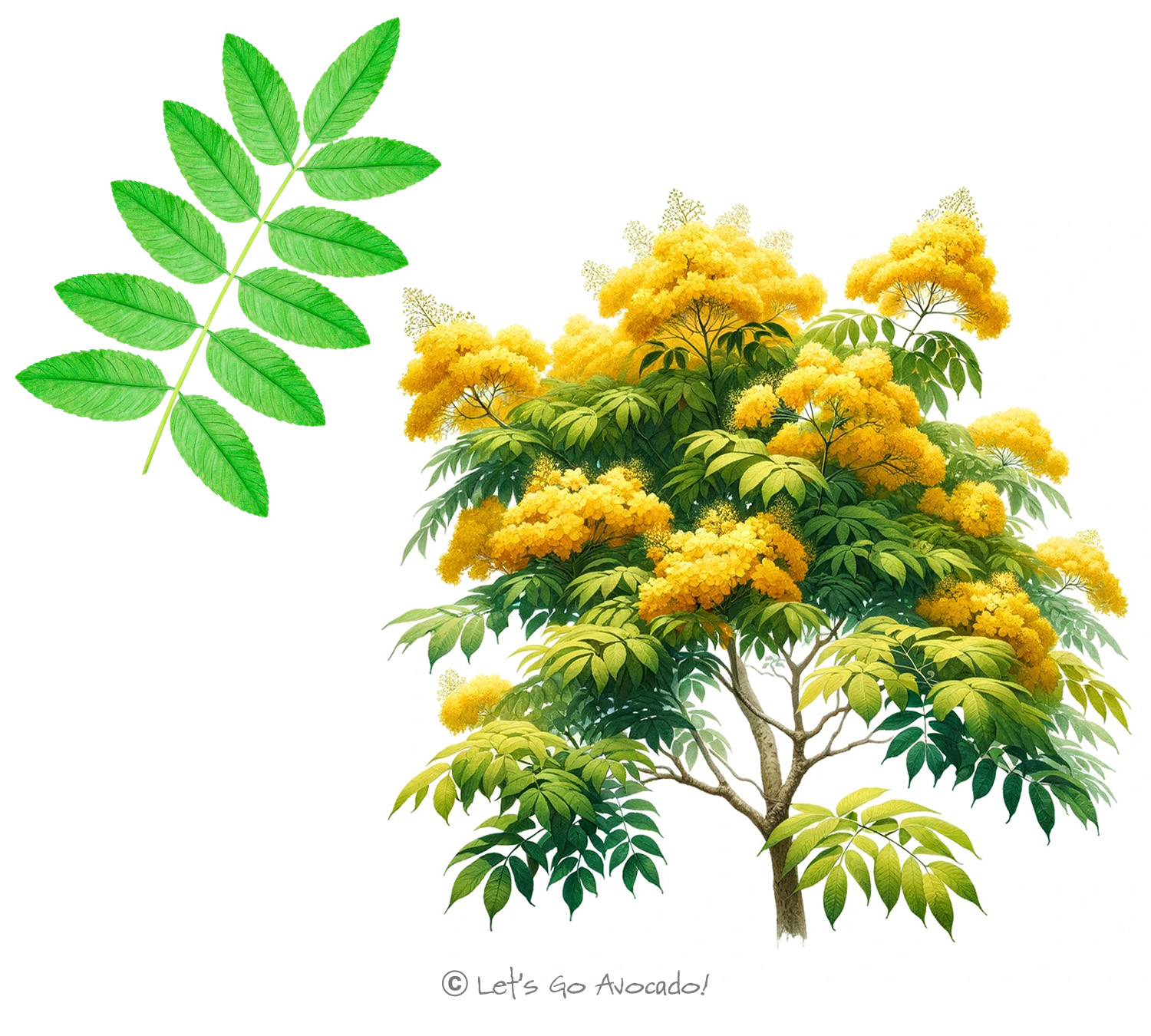The Yellow Elder Tree: A Sunny Delight in the Garden
Are you ready to meet a tree that’s like a burst of sunshine? Say hello to the Yellow Elder, known scientifically as Tecoma stans! This tree is famous for its bright yellow flowers that can light up any garden. Native to the Americas, the Yellow Elder is a popular choice for adding a splash of color and tropical vibes to gardens and landscapes.
What Makes the Yellow Elder Stand Out?
It’s all about the flowers! The Yellow Elder has clusters of trumpet-shaped, sunny yellow flowers that bloom almost all year round in warm climates. Its leaves are pretty too, divided into lots of small leaflets that give the tree a feathery look. When it’s full of flowers, the Yellow Elder is like a big, happy bouquet.
Size and Growth of the Yellow Elder
The Yellow Elder is a medium-sized tree, growing about 10-20 feet tall (3-6 meters). That’s about as tall as two or three grown-ups standing on each other’s shoulders! It grows pretty fast and has a nice, spreading shape that’s great for shade and for making a garden look full and lively.
The Yellow Elder’s Happy Life
This tree loves the sun and does best in warm, sunny places. It’s not too picky about soil and can grow in different kinds, as long as it’s not too wet. The Yellow Elder’s flowers attract lots of bees, butterflies, and birds, making it a busy spot for wildlife in the garden.
Why Is the Yellow Elder Important?
Besides being beautiful, the Yellow Elder’s flowers are super important for pollinators like bees and butterflies. It’s like a drive-thru for these little creatures, offering them plenty of nectar. Plus, its bright flowers can cheer up any space and make it look more lively and inviting.
Is This Tree Tough?
The Yellow Elder is pretty tough when it comes to handling heat and sun. It can even handle a bit of droughtDrought is when a place doesn’t get enough rain for a really long time. It’s like having a super dry and parched period where there’s not enough water for plants, animals, or people. Droughts can be tough because they can lead to water shortages, affect farming, and impact the environment, making it harder for everything to thrive. Learn More, which means it doesn’t need a ton of water to stay happy. This makes it a good choice for gardens in warmer places.
People and the Yellow Elder
People love the Yellow Elder for its cheerful flowers and easy-going nature. It’s often planted in gardens, parks, and along streets to add a pop of color and to attract pollinators. In some places, people use parts of the tree for traditional medicine, but it’s mostly grown for its beauty.
The Yellow Elder tree is more than just a pretty tree; it’s a bright spot in the garden that brings joy and life. Its flowers light up the area and make it a favorite spot for bees and butterflies.
Every tree has something special to share, just like the Yellow Elder with its bright flowers and friendly vibes. Keep exploring and learning about trees, and you’ll see how each one brings its own kind of magic to the world!










